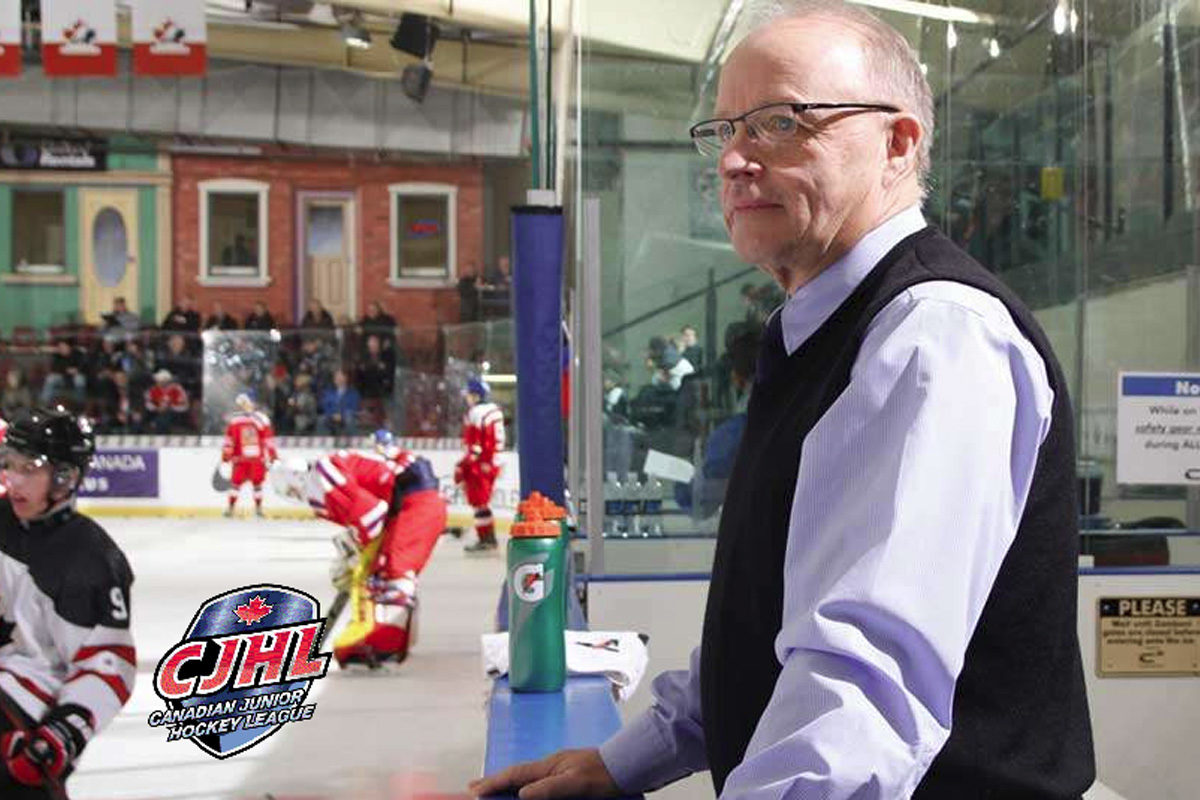CALGARY, Alta. – In these unprecedented times, the Canadian Junior Hockey League, like so many others, continues to be affected by the ongoing COVID-19 pandemic.
There will be no Centennial Cup, presented by Tim Hortons, handed out for a second straight year while many of the CJHL leagues and member clubs remain in a state of flux.
With the uncertainty that continues across the national Jr. A landscape, CJHL President Brent Ladds took some time out of his schedule to provide some thoughts and insight on what is currently being done in a number of areas involving its 10-member leagues and 135 teams with a CJHL Q&A.
CJHL: Discuss some of the initiatives the CJHL is working on in terms of prospect development, opportunities, etc., during these trying times of COVID-19.
BRENT LADDS: These are definitely unprecedented times for all of us, and while we are challenged with trying to enhance development opportunities for our players, we are also committed to maintaining a safe environment in doing so.
Some of our leagues will organize showcases and special events to assist players with their goals once it is safe to do so, even if this takes them into April or May. We are also challenged with a lack of ice in some municipalities, which will also be a consideration.
We are working with NHL Central Scouting to determine its long-term plan as it relates to the NHL Draft, and what we might be able to do to assist with player identification.
CJHL: Give us your thoughts on the significance of leagues such as the SJHL and AJHL receiving funding, or avenues to generate revenue, from their respective provincial governments in terms of COVID-19 assistance.
BL: We are indebted to the governments of both Alberta and Saskatchewan for recognizing the vital role that our members play in their respective provinces and how important a part of the social fabric they maintain in those communities.
However, the challenges aren’t unique or exclusive to those two leagues, and we sincerely hope that other provinces will follow the Alberta / Saskatchewan initiative with regards to other CJHL member leagues.
This year has been a financially difficult one for our members. Where leagues have been permitted windows of play, it has been in empty buildings and with severely reduced revenue streams. At the same time, the fixed costs faced by our leagues and teams have been not changed to any great degree. They have suffered irreparable financial harm in some cases, and hopefully, the governments in their respective provinces will appreciate that and find the means to assist them.
CJHL: Can you talk about the importance of so many teams across the country in CJHL markets and what they mean to their communities, both on and off the ice.
BL: Many of our teams are focal points as the social outlet in their communities in helping residents get through long, tough winters. The arena is where people gather to discuss local politics, social issues, and offer a sympathetic ear on the challenging issues that often plague them and families.
In many cases the teams in these communities are the main link in connecting families in need with fund-raising events, addressing social issues, and providing the distraction that allows people facing difficult times to forget, for a few hours, the everyday stress with which they deal. That’s never been truer one year into a once-in-a-lifetime public health crisis.
The heavy volunteer element that is involved at our level also provides communities an opportunity to realize the value and goodness in working together, for the betterment of the community as well as the hockey club.
CJHL: How has the planning been in working with each of the CJHL member leagues, along with our partners, such as Hockey Canada and the NHL?
BL: At the NHL and Hockey Canada level, the cooperation and mentorship opportunities have been outstanding. Facing such a difficult time, we all come to realize that we all play a role in the appreciation and presentation of the game which so many North Americans love.
The commitment to player and administrative development (on and off the ice), entertainment, and social values is at an all-time high from every facet of the game. As they say, it is a marathon not a sprint, and I can assure you with the continued leadership of both Hockey Canada and the NHL, we will get to the top of the mountain.
We have been active throughout the quiet times this year to maintain a focus with our leagues on striving to be better. Recognizing that many of our players who play the game will not attain long-term careers in professional hockey, we are dedicating a great deal of our energy this season to improving player education programs, on-ice player safety, and diversity awareness to ensure that they become leaders within their communities after their competitive experiences.
CJHL: Can you provide an update on the various CJHL committees that have been formed and some of the significant steps that have been undertaken.
BL: Our Player Safety Committee has spent a great deal of time on developing a pathway to consistent playing rules for all of our 10 leagues, and player education videos on what is unacceptable play, with the background to that rationale.
Our Communications Committee is studying better ways to communicate our collective message, and identifying ways of engaging all ten of our leagues’ communications personnel to share messaging and positive stories, as well as to track CJHL alumni and tell their stories. It will be an exciting environment to work in once their work is complete.
Our Diversity and Inclusion group, with so many outside subject advisors, has been instrumental in redeveloping our Terms of Reference to ensure that when our work is complete, our strategy will be a comprehensive initiative that makes our players future ambassadors for diversity in their respective communities.
Player Education has always been a big part of what the CJHL represents, and the pandemic allowed us to step back and survey our landscape to evaluate programs in each league and community. We have been able to recommend enhancements to our present-day practices to the CJHL Board of Directors, which will better serve the players in the future.
CJHL: Any closing thoughts you would like to discuss?
BL: While the past season has not been anything that we would want to encounter again, it has given us opportunity to engage and do a deeper dive into many of the programs that we have supported in the past with the No. 1 priority of making sure the CJHL is well-positioned to meet and demands and needs of every player in our leagues from coast to coast to coast.
It has also given us the opportunity to work closer with our partners in hockey – the NHL, Hockey Canada, and the CHL – to address common concerns. We are extremely hopeful that these relationships will continue to grow as a result, we can learn from each other’s experiences, and create pathways for junior hockey players that meet their individual needs and help them fulfill their goals and dreams.
ABOUT THE CJHL: Formed in the spring of 1970, The Canadian Junior Hockey League is currently made up of the 10 Junior ‘A’ leagues across Canada and five communities in the northern U.S.
Representing 135 teams and over 3,000 players, the CJHL also currently boasts over 2,800 alumni furthering their hockey careers at the NHL, AHL, ECHL, CHL, NCAA and U SPORTS levels throughout North America as well as in professional leagues in Europe.
Through its league title holders and host teams in four regional championship events (Fred Page Cup; Dudley-Hewitt Cup; ANAVET Cup & Doyle Cup), and in conjunction with Hockey Canada, the four regional winners, as well as host team, compete annually for the Centennial Cup, presented Tim Hortons, for the Canadian National Jr. A Championship.
Photo credit: Matthew Murnaghan/Hockey Canada Images





















